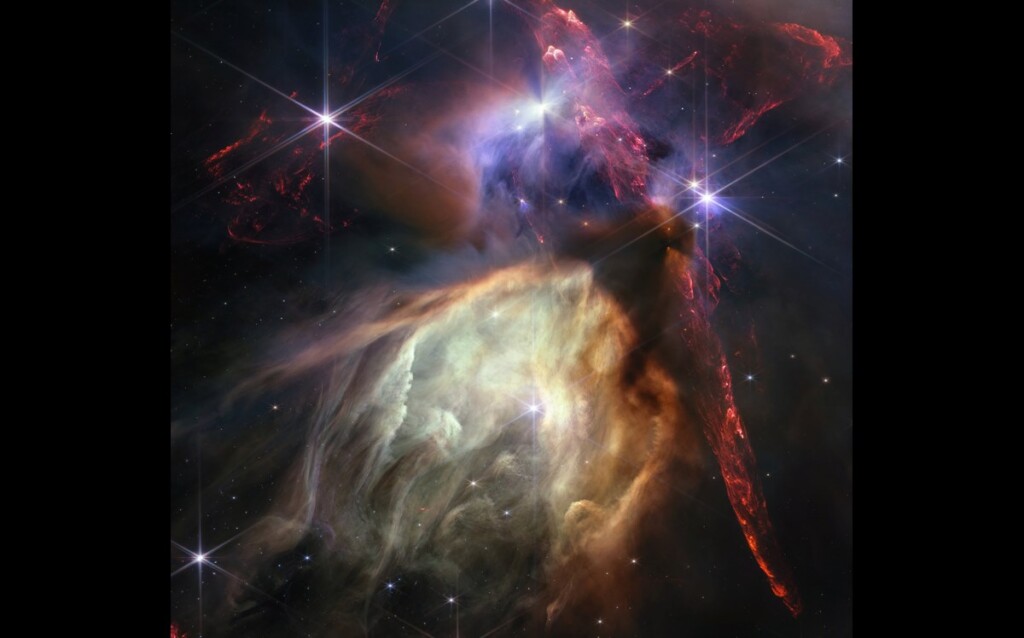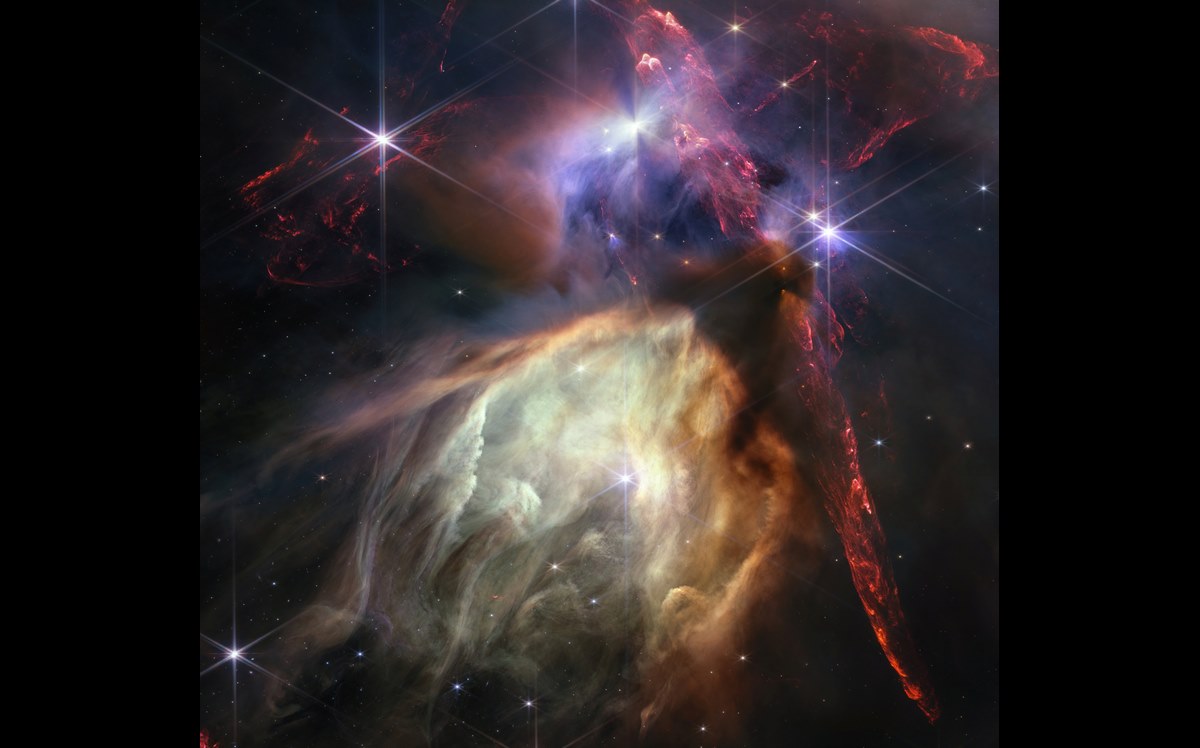
It’s been a long and successful year for the James Webb Space Telescope, and to mark the anniversary of its entry into service, NASA has shown off Webb’s vibrant picture of a small star-forming region in the Rho Ophiuchi cloud complex.
“From our cosmic backyard in the solar system to distant galaxies near the dawn of time, NASA’s James Webb Space Telescope has delivered on its promise of revealing the universe like never before in its first year of science operations,” NASA stated.
The first-anniversary image displays star birth “like it’s never been seen before,” full of detailed, impressionistic texture. The subject is the Rho Ophiuchi cloud complex, the closest star-forming region to Earth.
“It is a relatively small, quiet stellar nursery, but you’d never know it from Webb’s chaotic close-up,” boast NASA. “Jets bursting from young stars crisscross the image, impacting the surrounding interstellar gas and lighting up molecular hydrogen, shown in red. Some stars display the telltale shadow of a circumstellar disk, the makings of future planetary systems.”
Two critical differences single out the JWST as such a remarkable machine: the first is that it sees into infrared light—a spectrum which the human eye cannot see, and the second is that it orbits the second LaGrange Point a million miles from Earth, removing any light pollution of our world from diluting its imagery.
It’s made some important discoveries and snapped some incredible photographs. From our own solar system, Webb has clarified details on Jupiter, such as the planet’s minuscule rings, as well as the Jovian aurorae, on Neptune where the telescope was able to clearly image the planet’s rings and moons together for the first time, and from Saturn where it was able to gather exquisite data on the effect of methane clouds in Saturn’s atmosphere.
Webb has also been studying Saturn’s moons and managed to record a plume of water erupting from the surface of the ocean world Enceladus that was 6,000 miles long.
Outside the solar system, the JWST has taken amazing photos of the oldest galaxies ever found, created just 500 million years after the Big Bang, of an exploding star in the constellation Cassiopeia, and also lent a hand to a European effort to study X-ray light in the universe with a 4-panel mosaic of technological artwork.
MORE ASTRONOMY NEWS: Scientists Discover Time Moving 5x Slower After Big Bang–Exactly as Einstein Predicted
“In just one year, the James Webb Space Telescope has transformed humanity’s view of the cosmos, peering into dust clouds and seeing light from faraway corners of the universe for the very first time,” said NASA Administrator Bill Nelson. “Every new image is a new discovery, empowering scientists around the globe to ask and answer questions they once could never dream of.”
“Thousands of engineers, scientists, and leaders poured their life’s passion into this mission, and their efforts will continue to improve our understanding of the origins of the universe—and our place in it.”
SHARE This Beautiful Cosmic Milestone With Your Friends…




















